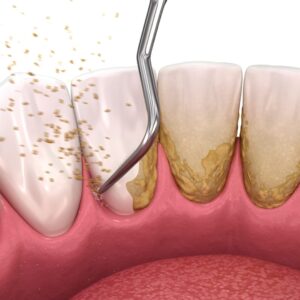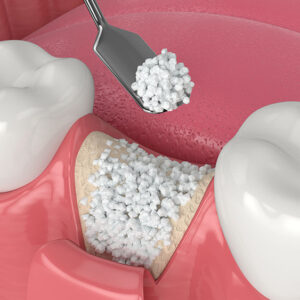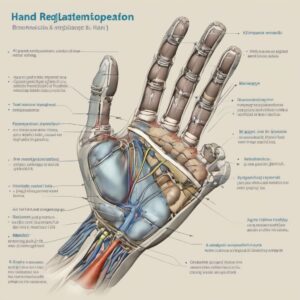Description
Familiarity with treatment
During breast implant removal with capsulectomy, the surgeon removes the breast implants along with the surrounding scar tissue capsule. Here is an explanation of the procedure based on the search results:
Types of Capsulectomy: There are different types of capsulectomy procedures that can be performed:
Total Capsulectomy: In a total capsulectomy, the entire scar tissue capsule surrounding the implant is removed. The surgeon may remove the implant first before removing the capsule. Once the capsule is removed, the surgeon may replace the implant if desired.
Subtotal or Partial Capsulectomy: A partial capsulectomy involves the surgical removal of some, but not all, of the scar tissue capsule.
En Bloc Capsulectomy: An en bloc capsulectomy is a variation of total capsulectomy. During this procedure, the surgeon removes the implant and the capsule together as one intact unit. This technique is often used when there is a ruptured implant or in cases of breast implant-associated anaplastic large cell lymphoma (BIA-ALCL).
Surgical Procedure: Breast implant removal with capsulectomy is typically performed under general anesthesia. The surgeon makes incisions to access the implant and the surrounding scar tissue capsule. The implant is removed, and the capsule is dissected and removed accordingly. In some cases, additional procedures such as a breast lift or replacement with new implants may be performed.
Reasons for Capsulectomy: Capsulectomy may be performed for various reasons, including the treatment of capsular contracture (abnormal hardening of the scar tissue around the implant), implant rupture, infection, or in cases of BIA-ALCL. It may also be performed as part of breast implant revision surgery or in cases of breast implant illness.
Recovery and Follow-up: After the surgery, you will have dressings or bandages over the incision sites. You may be instructed to wear a support bra or surgical garment to aid in healing and provide support. Pain medication may be prescribed to manage any discomfort. It is important to follow your surgeon’s postoperative instructions, including activity restrictions and attending follow-up appointments to monitor healing and address any concerns.
Who is it suitable for?
Breast implant removal with capsulectomy may be suitable for individuals who have specific concerns or conditions related to their breast implants. Here are some factors that may indicate the suitability for this procedure:
Capsular Contracture: Capsular contracture is the abnormal hardening of the scar tissue capsule around the breast implant. It can cause discomfort, distortion of the breast shape, and other symptoms. Capsulectomy may be recommended to address capsular contracture and alleviate associated symptoms.
Implant Rupture: If a breast implant has ruptured, the removal of the implant and the surrounding scar tissue capsule may be necessary. In such cases, capsulectomy is often performed to ensure the complete removal of the implant and any leaked silicone or saline.
Infection: In cases of infection around the breast implant, removal of the implant and the infected scar tissue capsule may be required. Capsulectomy can help eliminate the source of infection and promote healing.
Breast Implant-Associated Anaplastic Large Cell Lymphoma (BIA-ALCL): BIA-ALCL is a rare type of cancer that can develop in the scar tissue capsule surrounding breast implants. In cases of BIA-ALCL, complete removal of the implant and the scar tissue capsule, often through en bloc capsulectomy, may be recommended.
Breast Implant Illness (BII): Some individuals may experience a range of symptoms attributed to breast implant illness, such as fatigue, joint pain, and cognitive issues. In cases where breast implant removal is desired to alleviate these symptoms, capsulectomy may be performed to remove the scar tissue capsule associated with the implants.
Who is it not suitable for?
While breast implant removal with capsulectomy can be a suitable option for many individuals, there are certain situations where it may not be recommended. Here are some factors that may indicate that the procedure is not suitable:
No Specific Concerns or Complications: If you have breast implants but are not experiencing any issues or complications related to them, such as capsular contracture, implant rupture, infection, or BIA-ALCL, then breast implant removal with capsulectomy may not be necessary. In such cases, you may choose to keep the implants or consider other options based on your preferences and goals.
Unrealistic Expectations: It is important to have realistic expectations about the outcome of the procedure. If your expectations are unrealistic or if the goals of breast implant removal with capsulectomy cannot be achieved based on your anatomy or other factors, your surgeon may advise against the procedure.
Medical or Surgical Risks: In some cases, certain medical conditions or surgical risks may make breast implant removal with capsulectomy less suitable. This could include uncontrolled medical conditions, bleeding disorders, or a high risk of complications during surgery. Your surgeon will evaluate your medical history and overall health to determine if the procedure is appropriate for you.
Psychological Readiness: Undergoing any surgical procedure, including breast implant removal, requires psychological readiness and a full understanding of the implications and potential outcomes. If you are not emotionally prepared for the procedure or have unrealistic expectations about the results, it may be advisable to delay or reconsider the surgery.
Advantages
Breast implant removal with capsulectomy offers several potential advantages. Here are some advantages mentioned in the search results:
Treatment of Capsular Contracture: Capsular contracture is a common complication of breast implants, where the scar tissue capsule around the implant becomes thick and tight. Capsulectomy can help address this issue by removing the entire scar tissue capsule, providing relief from discomfort and improving the appearance of the breasts 1.
Resolution of Breast Implant-Associated Anaplastic Large Cell Lymphoma (BIA-ALCL): BIA-ALCL is a rare type of cancer associated with textured breast implants. Capsulectomy, particularly en bloc capsulectomy, is often recommended for the treatment of BIA-ALCL. By removing the implant and the scar tissue capsule together, the risk of cancer recurrence is minimized 2.
Management of Breast Implant Illness (BII) Symptoms: Some individuals with breast implants may experience a range of symptoms attributed to breast implant illness (BII), such as fatigue, joint pain, and cognitive issues. Capsulectomy, especially total capsulectomy, has been reported to improve or resolve BII-related symptoms in a significant number of patients.
Prevention of Silicone or Biofilm Escape: Capsulectomy, particularly total capsulectomy, prevents substances within the scar tissue capsule, such as silicone or biofilm, from escaping into the body. This can be beneficial for individuals concerned about the potential long-term effects of these substances 3.
Improved Surgical Site Drainage: By removing the scar tissue capsules and using drains, the risk of fluid collection in the surgical site is reduced. This can help promote proper healing and minimize the risk of complications 3.
Customization of Breast Revision: Breast implant removal with capsulectomy allows for customization of breast revision surgery. It provides the opportunity to address specific concerns, such as implant rupture, infection, or changes in aesthetic preferences. The surgeon can replace the implants, perform a breast lift, or leave the breasts without implants based on the patient’s goals 4.
Complications
Breast implant removal with capsulectomy, like any surgical procedure, carries potential complications. Here are some complications mentioned in the search results:
Bleeding and Bruising: One of the most common complications of breast capsulectomy is bleeding and bruising at the surgical site. This can occur during the procedure or in the postoperative period.
Infection: While rare, there is a risk of infection following breast implant removal with capsulectomy. Precautions are taken to minimize this risk, such as administering antibiotics during surgery and following proper sterile techniques.
Hematoma: Hematoma refers to the accumulation of blood in the surgical area. It can occur as a result of bleeding during or after the procedure. Hematomas may require additional intervention, such as drainage, to promote proper healing.
Wound Dehiscence: Wound dehiscence is the separation or opening of the surgical incision. It can occur due to various factors, such as excessive tension on the incision site or poor wound healing. In some cases, wound dehiscence may require additional treatment or revision surgery.
Capsular Contracture Recurrence: Although capsulectomy aims to address capsular contracture, there is a possibility of recurrence in some cases. The formation of new scar tissue around the implant can lead to the reoccurrence of capsular contracture.
preoperative care
Preoperative care for breast implant removal with capsulectomy involves several considerations to ensure a safe and successful procedure. Here are some aspects of preoperative care mentioned in the search results:
Consultation and Evaluation: The first step in the preoperative process is to schedule a consultation with a qualified plastic surgeon. During this consultation, the surgeon will evaluate your medical history, perform a physical examination, and discuss your goals and expectations for the procedure. They may also order additional tests, such as imaging or blood work, to assess your breast implants and overall health.
Medical Clearance: Depending on your medical history and any underlying health conditions, your surgeon may require medical clearance from your primary care physician or other specialists. This ensures that you are in good overall health and can safely undergo the surgical procedure.
Discussion of Expectations and Risks: Your surgeon will discuss the potential risks and complications associated with breast implant removal with capsulectomy. They will also explain the expected outcomes and address any concerns or questions you may have. It is important to have a clear understanding of the procedure and realistic expectations.
Discontinuation of Medications: Your surgeon will provide instructions regarding the discontinuation or adjustment of certain medications, such as blood thinners or nonsteroidal anti-inflammatory drugs (NSAIDs), prior to the surgery. This is to minimize the risk of excessive bleeding during the procedure.
Smoking Cessation: If you are a smoker, your surgeon may advise you to quit smoking or refrain from smoking for a certain period before and after the surgery. Smoking can impair wound healing and increase the risk of complications.
Preoperative Instructions: Your surgeon will provide specific preoperative instructions, such as fasting guidelines, showering instructions, and restrictions on eating or drinking before the surgery. It is important to follow these instructions carefully to ensure a smooth and safe procedure.
Arrangements for Recovery: You may need to make arrangements for someone to drive you home after the surgery and provide assistance during the initial recovery period. It is also important to prepare your home environment with necessary supplies, such as comfortable clothing, pain medications, and postoperative care instructions.
Postoperative care
Postoperative care following breast implant removal with capsulectomy is essential for proper healing and optimal outcomes. Here are some aspects of postoperative care mentioned in the search results:
Wound Care: Proper wound care is crucial to prevent infection and promote healing. Your surgeon will provide specific instructions on how to care for the incision sites, including keeping them clean and dry, changing dressings as directed, and avoiding activities that may strain the incisions.
Pain Management: You may experience discomfort or pain after the surgery. Your surgeon will prescribe pain medications or recommend over-the-counter pain relievers to help manage any postoperative pain. It’s important to follow the prescribed dosage and instructions for pain medication.
Activity Restrictions: Your surgeon will provide guidelines on activity restrictions during the initial recovery period. This may include avoiding strenuous activities, heavy lifting, or exercises that strain the chest muscles. Following these restrictions is important to allow proper healing and minimize the risk of complications.
Follow-up Appointments: Your surgeon will schedule follow-up appointments to monitor your healing progress and address any concerns or questions you may have. It’s important to attend these appointments as scheduled to ensure proper monitoring of your recovery.
Compression Garments: Your surgeon may recommend wearing a compression garment or surgical bra to provide support to the breasts and aid in the healing process. Follow your surgeon’s instructions regarding the duration and usage of compression garments.
Scar Management: Your surgeon may provide recommendations for scar management, such as applying topical ointments or silicone sheets to help minimize the appearance of scars. It’s important to follow your surgeon’s instructions regarding scar management to optimize the healing of incision sites.
Monitoring for Complications: While complications are rare, it’s important to be aware of potential signs of complications, such as excessive swelling, persistent pain, redness, or signs of infection. If you notice any concerning symptoms, contact your surgeon promptly.





Reviews
There are no reviews yet.